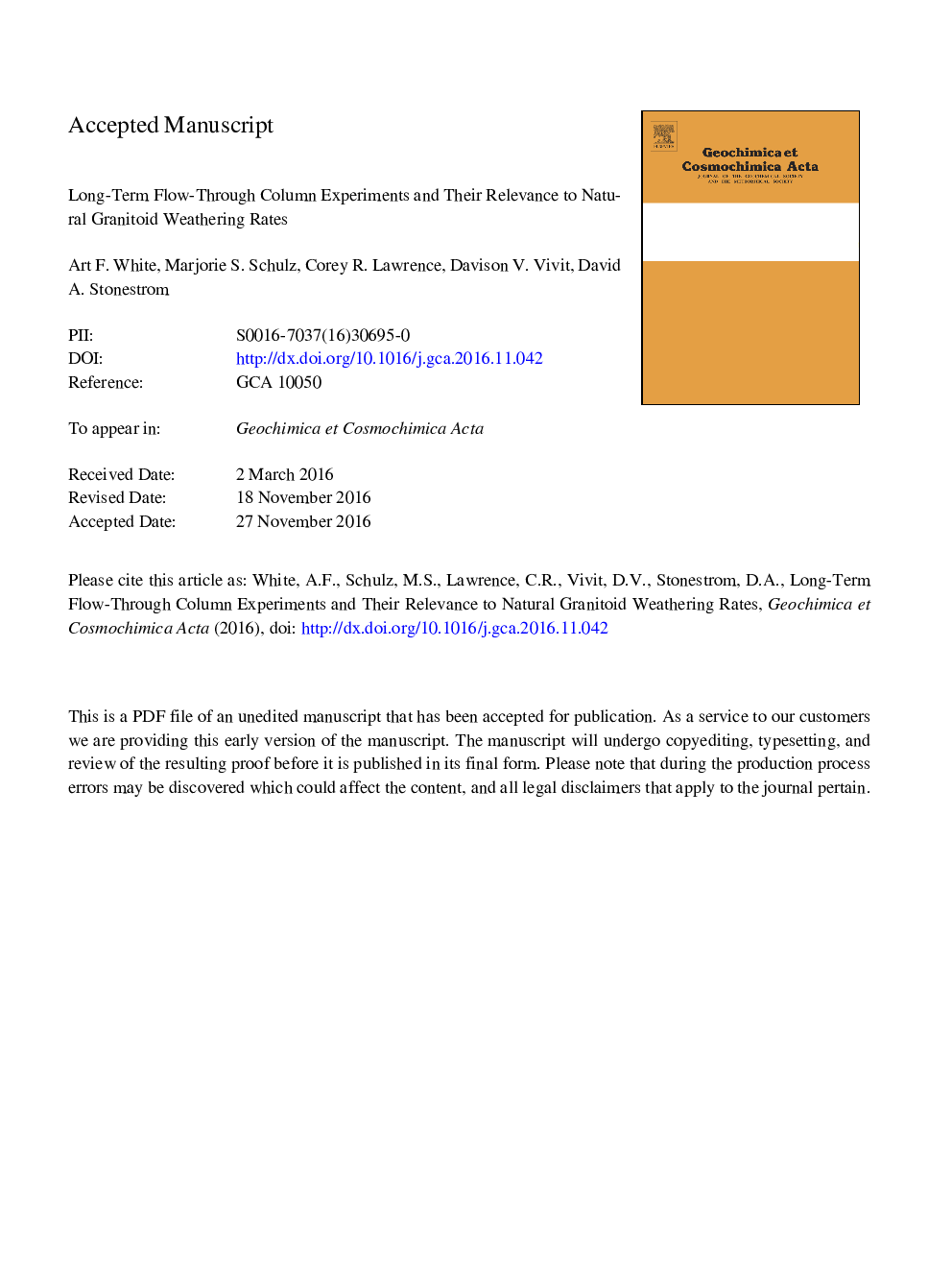| Article ID | Journal | Published Year | Pages | File Type |
|---|---|---|---|---|
| 5783502 | Geochimica et Cosmochimica Acta | 2017 | 57 Pages |
Abstract
Effluents became thermodynamically saturated with goethite and gibbsite, slightly under-saturated with kaolinite and strongly under-saturated with plagioclase, consistent with kinetically-limited weathering in which solutes such as Na varied with column flow rates. Effluent Na concentrations showed no clear trend with time during the last decade of reaction (fresh granitoids) or increased slowly with time (weathered granitoids). Analysis of cumulative Na release indicated that plagioclase dissolution achieved steady state in 3 of the 4 fresh granitoids during the last decade of reaction. Surface-area normalized plagioclase dissolution rates exhibited a narrow range (0.95-1.26 10â13 moles mâ2 sâ1), in spite of significant stoichiometric differences (An0.21 to An0.50). Rates were an order of magnitude slower than previously reported in shorter duration experiments but generally 2-3 orders of magnitude faster than corresponding natural analogs. CrunchFlow simulations indicated that more than a hundredfold decrease in column flow rates would be required to produce near-saturation reaction affinities that would start to slow plagioclase weathering to real-world levels. Extending simulations to approximate long term weathering in naturally weathered profiles required additional decreases in the intrinsic plagioclase dissolution and kaolinite precipitation rates and relatively large decreases in the fluid flow rate, implying that exposure to reactive mineral surfaces is significantly limited in the natural environment compared to column experiments.
Keywords
Related Topics
Physical Sciences and Engineering
Earth and Planetary Sciences
Geochemistry and Petrology
Authors
Art F. White, Marjorie S. Schulz, Corey R. Lawrence, Davison V. Vivit, David A. Stonestrom,
